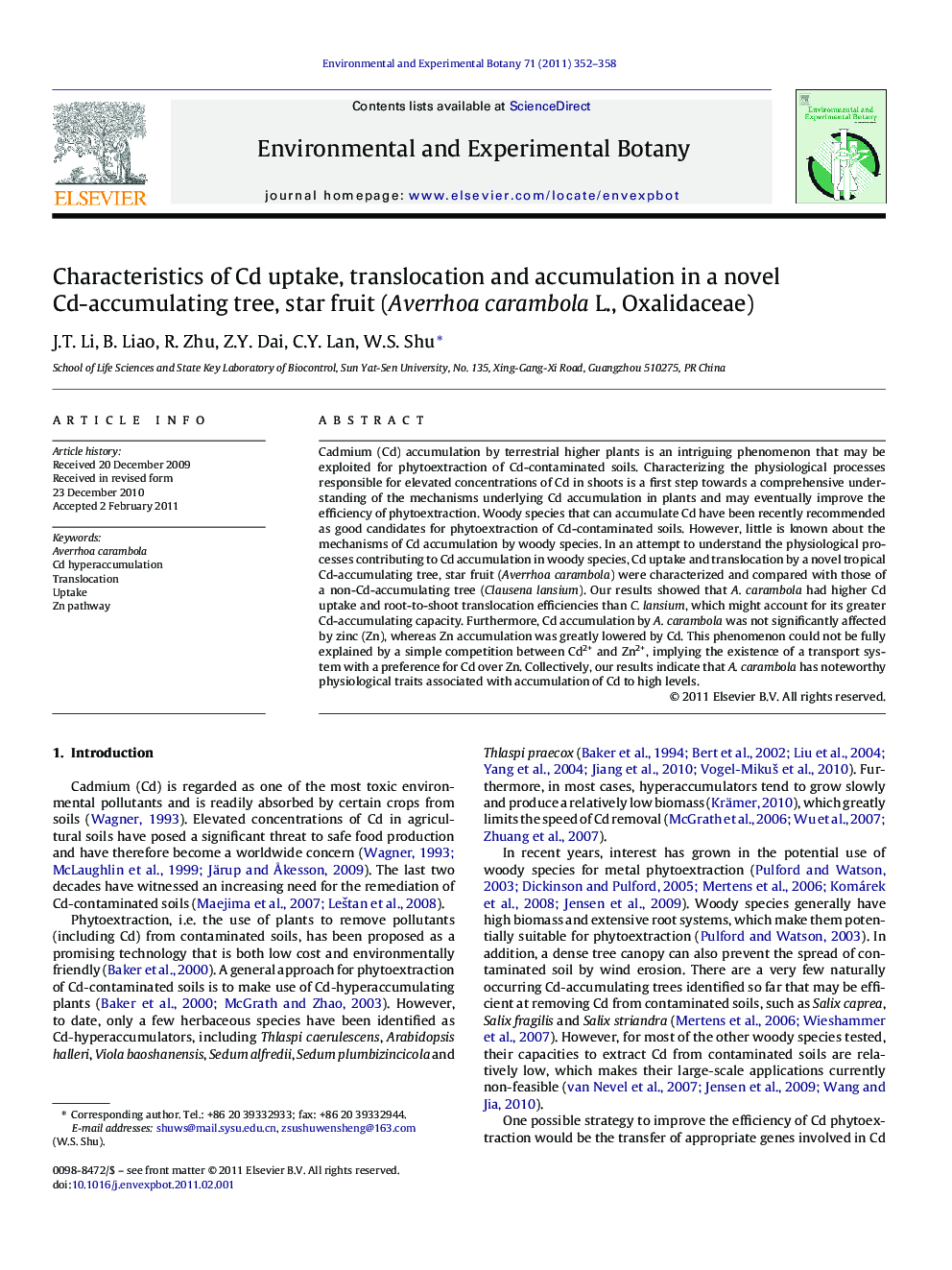| Article ID | Journal | Published Year | Pages | File Type |
|---|---|---|---|---|
| 4554905 | Environmental and Experimental Botany | 2011 | 7 Pages |
Cadmium (Cd) accumulation by terrestrial higher plants is an intriguing phenomenon that may be exploited for phytoextraction of Cd-contaminated soils. Characterizing the physiological processes responsible for elevated concentrations of Cd in shoots is a first step towards a comprehensive understanding of the mechanisms underlying Cd accumulation in plants and may eventually improve the efficiency of phytoextraction. Woody species that can accumulate Cd have been recently recommended as good candidates for phytoextraction of Cd-contaminated soils. However, little is known about the mechanisms of Cd accumulation by woody species. In an attempt to understand the physiological processes contributing to Cd accumulation in woody species, Cd uptake and translocation by a novel tropical Cd-accumulating tree, star fruit (Averrhoa carambola) were characterized and compared with those of a non-Cd-accumulating tree (Clausena lansium). Our results showed that A. carambola had higher Cd uptake and root-to-shoot translocation efficiencies than C. lansium, which might account for its greater Cd-accumulating capacity. Furthermore, Cd accumulation by A. carambola was not significantly affected by zinc (Zn), whereas Zn accumulation was greatly lowered by Cd. This phenomenon could not be fully explained by a simple competition between Cd2+ and Zn2+, implying the existence of a transport system with a preference for Cd over Zn. Collectively, our results indicate that A. carambola has noteworthy physiological traits associated with accumulation of Cd to high levels.
Research highlights► We characterized the physiological processes contributing to Cd accumulation in a novel tropical Cd-accumulating tree (Averrhoa carambola). ► Our results showed that A. carambola had higher Cd uptake and root-to-shoot translocation efficiencies than Clausena lansium (a woody non-accumulator). ► Furthermore, it was found that Cd transport in A. carambola was not significantly affected by Zn, whereas Zn transport was greatly inhibited by Cd. ► This finding implies the existence of a transport system with a preference for Cd over Zn in A. carambola.
